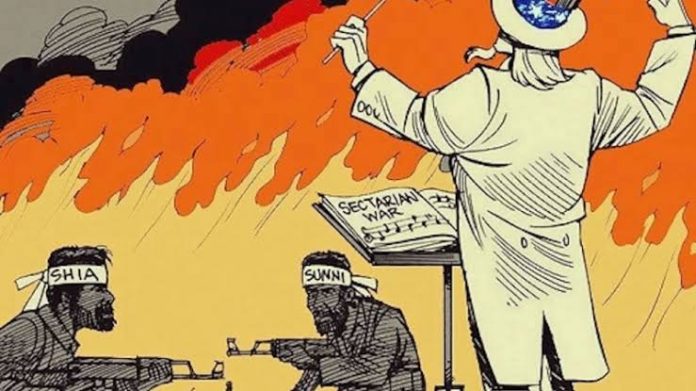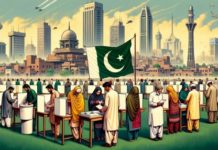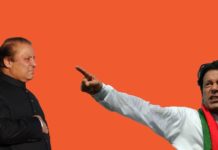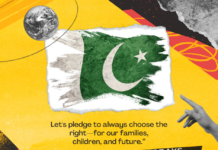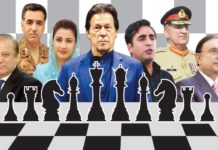This has been going on for a long time and as time goes by this conflict is also changing its nature but the situation is getting worse day by day. This conflict is neither of wealth nor of power, but this conflict is based on religious sectarianism and continues to flourish. Thousands of millions of precious human lives have been lost because of this conflict, from Pakistan to Afghanistan, from Iraq to Bahrain, and from Syria to Lebanon, this conflict has made Iran and Saudi Arabia blood-thirsty rivals.
No other sect has been tyrannized and oppressed as the Shias in Pakistan and this blood has become cheaper than the bread across borders of Asia to the Middle East where millions of innocent lives have been lost, but this never ending conflict demands more blood and thousands or millions of lives to be sacrificed. It is not possible to say whether this bloodbath will stop even after that.
The Sunni population in the world is 80-90 percent and the Shia population is 10-20 percent, the Sunni population consists of South Asia, Southeast Asia, China, Africa and Arab countries and the majority of Shia population resides in Iran, Iraq and Bahrain but in Lebanon and Azerbaijan, Shia Muslims enjoy political power too. Pakistan and Afghanistan also have large Shia populations. The Shia population in Pakistan is the second largest in the world with about 30 million people, second only to Iran with 90 percent (about 60 million) of the Shia population, but the proportion of the Shia population in India is the same as in Iraq.
The Shia Muslims made worthy sacrifices for the independence of Pakistan. Shias and Sunnis together took an active part in Pakistan’s independence movement and this freedom involves the blood of both the sects. Shiites have held and continue to hold senior government positions in Pakistan, ranging from army generals to Pakistan’s presidents and prime ministers.
Shia Muslims and Sunni Muslims have been living together for almost 1400 years. Both the sects also enjoyed their respective share of power. Shia and Sunni scholars too lauded the co-existence of both the sects with peace, harmony and mutual respect. Two examples of this alliance are given.
First: When the Caliph of Ottoman Empire was under threat in World War I, the then-powerful Shiite movement, the ‘Khilafah Movement’, decided at a meeting in Jerusalem in 1931 to support the Sunni Ottoman (Turkish) Caliph.
Second: When a scholar from Al-Azhar University in Egypt issued a fatwa and in view of this fatwa, Shiite Islamic law was recognized as the fifth jurisprudence of Islam.
And then all of a sudden in 1979, Iran’s Shiite revolution took place, this conflict became a political power struggle, and Iran began to empower the Shiite population wherever it was, and wherever the Sunni majority was, Saudi Arabia used its power to oppose Iran. Hence, the controversy became religious to political. Both sides blatantly used false religious tales and events as a tool to incite hate and violence.
Fatwas from religious scholars against each other fueled the situation further. From allegations of infidelity to the killings of the rival sect became a norm. Under the guise of this conflict, Iran and Saudi Arabia created religious extremist groups led by hate-mongering religious Mullahs, which they called ‘Mujahedeen’. However, in the quest to gain regional superiority common citizens paid the heaviest price.
Iran and Saudi Arabia began to provide financial and military support to their respective groups, and to support these vicious organizations. Both the countries left no stone unturned in offering military training to their respective organizations.
In Pakistan, the Sunni group ‘Sipah-e-Sahaba’ was formed against the Shia sect, while a military faction of the Shia group called Sipah-e-Muhammad was formed to carry out operations against the Sunni sect. When a Shiite group called ‘Hezbollah’ emerged in Lebanon, ‘Ansarullah’ was formed by Sunnis. In Afghanistan, ‘Hezb-e-Islami’ interpreted for Sunnis, and Shiites formed ‘Hezb-e-Wahdat’.
Similar groups were formed in Iraq, Syria and Bahrain. Their job was to massacre each other by issuing fatwas – these groups have been heating up the market for butcheries in these countries for years. Both extremist sections of Shia and Sunni groups enjoy support from within their countries and from foreign lands too.
Thousands of people have been killed in Pakistan so far under the fatwa of “Kafir Kafir Shia Kafir” (Shias are infidels) and in view of this fatwa thousands of Sunnis have been killed in Lebanon and in Syria. Under the same fatwa, thousands of Shiites and innocent Sunnis have been killed in Afghanistan, and in Iraq during the Sunni (Saddam Hussein) regime.
After defeating Soviet Union in Afghanistan, these Shia-Sunni jihadi groups announced a jihad among themselves. Horrendous sectarian killing took place in Kabul from 1992 to 1994. Blood was shed in the name of religion. These were the same Mujahedeen organizations who waged Jihad against Soviet Union which was incited by religious fatwas issued by Saudi Ulema and funded by the United States of America.
Innocent children were brutally murdered in each other’s settlements in Kabul, thousands of women were raped, their young men were put in containers and set on fire, and the elderly were sold into useless camps. All these jihadi deeds were carried out by issuing fatwas of infidelity against each other. A similar game was played in Iraq and a similar game is going on in Syria and each group has the support of one or another Muslim country and this war is not a political one but a war based on religious sectarianism in which Innocent people of opposing sects are being sacrificed in the name of religion. This war has also taken root in Pakistan and thousands of people have been killed. Sunni and Shia clerics have been murdered with the conflict gaining momentum each day.
These jihadi and religious extremist organizations have become the so-called contractors of the religion. They have got the blood of thousands of innocent souls on their hands. If one closely observe the deeds of these jihadi organizations, then the Holocaust of the Second World War will appear to be a dwarf. The way these Jihadi out fits have massacred their own innocent Muslims is a tale of tears. Today these Islamic countries shamelessly raise their voice against the oppression on Muslims by the West, but they do not account for their atrocities, and how their hands are dyed in blood of their own.
The only solution is to immediately ban these ghastly religious extremist organizations. Their top leadership and evil mullahs should be brought to justice and prosecuted for crimes of genocide. Speeches based on hatred and contempt against each other in mosques and gatherings should be banned. Religious views of every segment must be respected. The honor and dignity of each sect must be respected. The ruling government must ensure their writ. The recent rise in sectarian violence is a test case for the PTI government, if they fail to fuse the tension, Pakistan would be driven back to the darkest of times.


